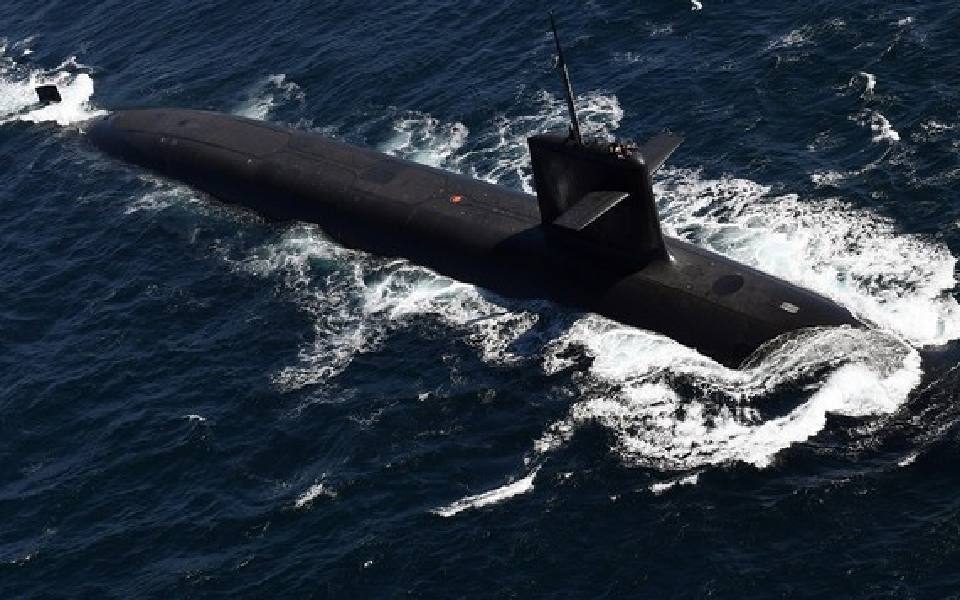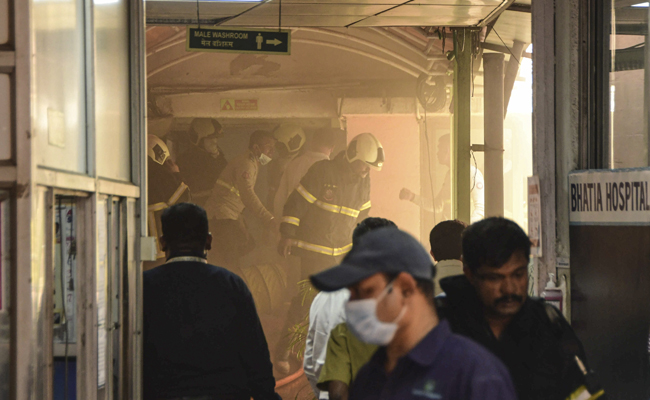Washington, Sep 27: Satellite imagery showed that China's newest nuclear-powered attack submarine sank alongside a pier while under construction, a senior US defence official said Thursday.
The sinking of China's first Zhou-class submarine represents a setback for Beijing as it continues to build out the world's largest navy. Beijing has become increasingly assertive in pursuing its claim to virtually the entire South China Sea, which is crucial to international trade.
Meanwhile, China faces longtime territorial disputes involving others in the region including Brunei, Malaysia, the Phillippines, Taiwan and Vietnam. The United States has sought to strength ties to its allies in the region and regularly sails through those waters in operations it says maintains the freedom of navigation for vessels there, angering Beijing.
The submarine likely sank between May and June, when satellite images showed cranes that would be necessary to lift it off the bottom of the river, said the official, who spoke on the condition of anonymity to provide details about the submarine loss.
China has been building up its naval fleet at a breakneck pace, and the US considers China's rise one of its main future security concerns.
The Chinese Embassy in Washington on Thursday said it was “not familiar with the situation” and it did not have information to provide.
The US official said it was “not surprising” that China's navy would conceal it. The submarine's current status is unknown.
The identification of the sunken nuclear submarine was first reported by The Wall Street Journal. Thomas Shugart, a former US Navy submariner and an analyst at the Center for a New American Security, first noticed the incident involving the submarine in July, though it wasn't publicly known at the time that it involved the new Zhou-class vessel.
Satellite images from Planet Labs PBC analyzed by The Associated Press show what appears to be a submarine docked at the Shuangliu shipyard on the Yangtze River before the incident.
An image taken June 15 appears to show the submarine either fully or partially submerged just under the river's surface, with rescue equipment and cranes surrounding it. Booms surround it to prevent any oil or other leaks from the vessel.
A satellite image taken August 25 shows a submarine back at the same dock as the submerged vessel. It's not clear if it was the same one.
It remains unclear if the affected submarine had been loaded with nuclear fuel or if its reactor was operating at the time of the incident. However, there has been no reported release of radiation in the area in the time since.
China as of last year operated six nuclear-powered ballistic missile submarines, six nuclear-powered attack submarines and 48 diesel-powered attack submarines, according to a US military report.
News of the submarine's sinking comes as China this week conducted a rare launch of an intercontinental ballistic missile into international waters in the Pacific Ocean. Experts say it marked the first time Beijing had conducted such a test since 1980.
Let the Truth be known. If you read VB and like VB, please be a VB Supporter and Help us deliver the Truth to one and all.
Johannesburg (AP): A 32-year-old suspect has been arrested in connection with a mass shooting which claimed the lives of 12 people including three children at an unlicensed pub earlier this month, South African police said on Monday.
The man is suspected of being one of the three people who opened fire on patrons in a pub at Saulsville township, west of South Africa's capital Pretoria, killing 12 people including three children aged 3, 12 and 16.
At least 13 people were also injured during the attack, whose motive remains unknown.
According to the police, the suspect was arrested on Sunday while traveling to Botlokwa in Limpopo province, more than 340 km from where the mass shooting took place on Dec 6.
An unlicensed firearm believed to have been used during the attack was recovered from the suspect's vehicle.
“The 32-year-old suspect was intercepted by Limpopo Tracking Team on the R101 Road in Westenburg precinct. During the arrest, the team recovered an unlicensed firearm, a hand gun, believed to have been used in the commission of the multiple murders. The firearm will be taken to the Forensic Science Laboratory for ballistic analysis,” police said in statement.
The suspect was arrested on the same day that another mass shooting at a pub took place in the Bekkersdal township, west of Johannesburg, in which nine people were killed and 10 wounded when unknown gunmen opened fire on patrons.
Police have since launched a search for the suspects.
South Africa has one of the highest homicide rates in the world and recorded more than 26,000 homicides in 2024 — an average of more than 70 a day. Firearms are by far the leading cause of death in homicides.
The country of 62 million people has relatively strict gun ownership laws, but many killings are committed with illegal guns, according to authorities.
According to police, mass shootings at unlicensed bars are becoming a serious problem. Police shut down more than 11,000 illegal taverns between April and September this year and arrested more than 18,000 people for involvement in illegal liquor sales.





